List of Padma Bhushan award recipients (1990–1999)
The Padma Bhushan is the third-highest civilian award of the Republic of India.[1] Instituted on 2 January 1954, the award is given for "distinguished service of a high order", without distinction of race, occupation, position, or sex.[2] The recipients receive a Sanad, a certificate signed by the President of India and a circular-shaped medallion with no monetary association. The recipients are announced every year on Republic Day (26 January) and registered in The Gazette of India—a publication used for official government notices and released weekly by the Department of Publication, under the Ministry of Urban Development.[3] The conferral of the award is not considered official without its publication in the Gazette. The name of recipient, whose award have been revoked or restored, both of which require the authority of the President, is archived and they are required to surrender their medal when their name is struck from the register;[4] none of the conferments of Padma Bhushan during 1990–1999 have been revoked or restored. The recommendations are received from all the state and the union territory governments, as well as from Ministries of the Government of India, the Bharat Ratna and the Padma Vibhushan awardees, the Institutes of Excellence, the Ministers, the Chief Ministers and the Governors of State, and the Members of Parliament including private individuals.[3]
| Padma Bhushan | |
|---|---|
 | |
| Type | National Civilian |
| Country | India |
| Presented by | Government of India |
| Ribbon | |
| Obverse | A centrally located lotus flower is embossed and the text "Padma" written in Devanagari script is placed above and the text "Bhushan" is placed below the lotus. |
| Reverse | A platinum State Emblem of India placed in the centre with the national motto of India, "Satyameva Jayate" (Truth alone triumphs) in Devanagari Script |
| Established | 1954 |
| First awarded | 1954 |
| Total | 113 |
| Website | http://www.padmaawards.gov.in/ |
| Precedence | |
| Next (higher) | |
| Next (lower) | |
When instituted in 1954, the Padma Bhushan was classified as "Dusra Varg" (Class II) under the three-tier Padma Vibhushan awards, which were preceded by the Bharat Ratna in hierarchy. On 15 January 1955, the Padma Vibhushan was reclassified into three different awards as the Padma Vibhushan, the Padma Bhushan and the Padma Shri.[3] The criteria included "distinguished service of a high order in any field including service rendered by Government servants", but excluded those working with the public sector undertakings with the exception of doctors and scientists. The 1954 statutes did not allow posthumous awards; this was subsequently modified in the January 1955 statute.[4] The design was also changed to the form that is currently in use; it portrays a circular-shaped toned bronze medallion 1 3⁄4 inches (44 mm) in diameter and 1⁄8 inch (3.2 mm) thick. The centrally placed pattern made of outer lines of a square of 1 3⁄16 inches (30 mm) side is embossed with a knob carved within each of the outer angles of the pattern. A raised circular space of diameter 1 1⁄16 inches (27 mm) is placed at the centre of the decoration. A centrally located lotus flower is embossed on the obverse side of the medal and the text "Padma" is placed above and the text "Bhushan" is placed below the lotus written in Devanagari script. The State Emblem of India is displayed in the centre of the reverse side, together with the national motto of India, "Satyameva Jayate" (Truth alone triumphs) in Devanagari script, which is inscribed on the lower edge. The rim, the edges and all embossing on either side is of standard gold with the text "Padma Bhushan" of gold gilt. The medal is suspended by a pink riband 1 1⁄4 inches (32 mm) in width with a broad white stripe in the middle.[3][4] It is ranked fifth in the order of precedence of wearing of medals and decorations of the Indian civilian and military awards.[lower-alpha 1]
In the 1990s, a total of 113 people were conferred with the award. Twenty-four awards were presented in both 1990 and 1991, followed by thirty-three in 1992. In February 1992, a writ petition was filed in the Kerala High Court questioning whether the civilian awards presented the Government of India were "titles" as per the Article 18 (1) of the Constitution of India.[6] The subject constitutional article states that "no title, not being a military or academic distinction, shall be conferred by the State".[7] Similar petition was also filed in August 1992 in the Indore Bench of the Madhya Pradesh High Court and a notice was issued on 25 August that led to provisional suspension of all civilian awards.[8][9] A Special Divisional Bench of the Supreme Court of India was set up with a panel of five judges that delivered the verdict on 15 December 1995 that the "Bharat Ratna and Padma awards are not titles within Article 18 of the Constitution of India".[8][10] Later in 1998 when the presentation of the awards resumed, eighteen recipients received the award followed by fourteen in 1999. The Padma Bhushan in the 1990s was also conferred upon five foreign recipients – two from the United Kingdom and one each from Japan, New Zealand, and the United States. Individuals from ten fields were honoured that included twenty-six artists, twenty-three from literature and education, eighteen from science and engineering, fifteen from medicine, eleven from public affairs, ten from social work, three sportspersons, three from trade and industry, and two from civil services and other fields each.[11]
Journalist Nikhil Chakravarty declined the award in 1990 so as to "not be identified with the establishment".[12] Historian Romila Thapar declined to accept the award in 1992, and later again in 2005, stating that she would accept awards only "from academic institutions or those associated with my professional work".[12] Similar to Chakravarty, journalist and civil servant K. Subrahmanyam also refused the honour citing that "bureaucrats and journalists should not accept any award from the government because they are more liable to be favoured."[12]
Recipients
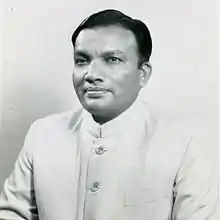
.jpg.webp)

.jpg.webp)

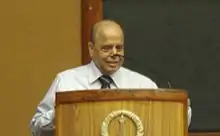
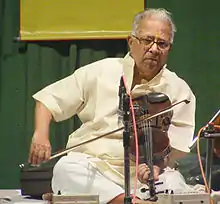
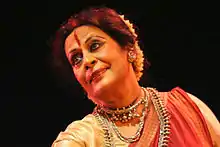
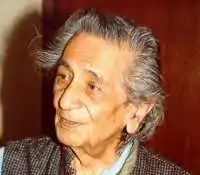
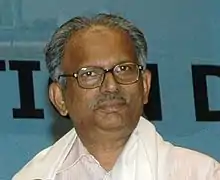
|
|
|---|
# Indicates a posthumous honour |
|---|
| Year | Recipient | Field | State |
|---|---|---|---|
| 1990 | Rajanikant Arole | Social Work | Maharashtra |
| 1990 | Bimal Kumar Bachhawat | Science & Engineering | Delhi |
| 1990 | Purushottam Laxman Deshpande | Arts | Maharashtra |
| 1990 | Sattaiyappa Dhandapani Desikar | Literature & Education | Tamil Nadu |
| 1990 | L. K. Doraiswamy | Science & Engineering | —[upper-alpha 1] |
| 1990 | Nikhil Ghosh | Arts | Maharashtra |
| 1990 | B. K. Goyal | Medicine | Maharashtra |
| 1990 | Jasraj | Arts | Maharashtra |
| 1990 | Mohammad Khalilullah | Medicine | Delhi |
| 1990 | R. N. Malhotra | Civil Service | Maharashtra |
| 1990 | Bimal Krishna Matilal | Literature & Education | —[upper-alpha 2] |
| 1990 | Inder Mohan | Social Work | Delhi |
| 1990 | Sumant Moolgaokar | Trade & Industry | Maharashtra |
| 1990 | Hirendranath Mukherjee | Literature & Education | West Bengal |
| 1990 | C. D. Narasimhaiah | Literature & Education | Karnataka |
| 1990 | M. S. Narasimhan | Science & Engineering | Maharashtra |
| 1990 | Kunwar Singh Negi | Literature & Education | Uttarakhand |
| 1990 | Trilochan Pradhan | Literature & Education | Odisha |
| 1990 | N. Ram | Literature & Education | Tamil Nadu |
| 1990 | Sukumar Sen | Literature & Education | West Bengal |
| 1990 | Arun Shourie | Literature & Education | Delhi |
| 1990 | Julius Silverman | Public Affairs | —[upper-alpha 2] |
| 1990 | M. R. Srinivasan | Science & Engineering | Maharashtra |
| 1990 | M. S. Valiathan | Medicine | Kerala |
| 1991 | Ebrahim Alkazi | Arts | Delhi |
| 1991 | Lala Amarnath | Sports | Delhi |
| 1991 | Narayan Shridhar Bendre | Arts | Maharashtra |
| 1991 | Shyam Benegal | Arts | Maharashtra |
| 1991 | D. B. Deodhar | Sports | Maharashtra |
| 1991 | Amjad Ali Khan | Arts | Delhi |
| 1991 | Dilip Kumar | Arts | Maharashtra |
| 1991 | Narayan Singh Manaklao | Social Work | Rajasthan |
| 1991 | Muthu Krishna Mani | Medicine | Tamil Nadu |
| 1991 | Ram Narayan | Arts | Maharashtra |
| 1991 | Fali Sam Nariman | Public Affairs | Delhi |
| 1991 | Kapil Dev | Sports | Delhi |
| 1991 | Manubhai Pancholi | Public Affairs | Gujarat |
| 1991 | Shakuntala Paranjpye | Social Work | Maharashtra |
| 1991 | Bindeshwar Pathak | Social Work | Bihar |
| 1991 | Samta Prasad | Arts | Uttar Pradesh |
| 1991 | Basavaraj Rajguru | Arts | Karnataka |
| 1991 | Prathap C. Reddy | Medicine | Andhra Pradesh |
| 1991 | Amala Shankar | Science & Engineering | West Bengal |
| 1991 | Vishnu Vaman Shirwadkar (Kusumagraj) | Literature & Education | Maharashtra |
| 1991 | Kuthur Ramakrishnan Srinivasan | Literature & Education | Tamil Nadu |
| 1991 | Ale Ahmad Suroor | Literature & Education | Uttar Pradesh |
| 1991 | Leslie Denis Swindale | Science & Engineering | —[upper-alpha 3] |
| 1991 | Jiwan Singh Umranangal | Public Affairs | Punjab |
| 1992 | Bijoy Chandra Bhagavati | Public Affairs | Assam |
| 1992 | Debu Chaudhuri | Arts | Delhi |
| 1992 | Hariprasad Chaurasia | Arts | Maharashtra |
| 1992 | Thayil John Cherian | Medicine | Tamil Nadu |
| 1992 | Ranjan Roy Daniel | Science & Engineering | Tamil Nadu |
| 1992 | Virendra Dayal | Civil Service | Delhi |
| 1992 | B. Saroja Devi | Arts | Karnataka |
| 1992 | Khem Singh Gill | Science & Engineering | Punjab |
| 1992 | Vavilala Gopalakrishnayya | Public Affairs | Andhra Pradesh |
| 1992 | Anna Hazare | Social Work | Maharashtra |
| 1992 | Hakim Abdul Hameed | Medicine | Delhi |
| 1992 | Kongara Jaggaiah | Arts | Andhra Pradesh |
| 1992 | Girish Karnad | Arts | Karnataka |
| 1992 | Krishnaswamy Kasturirangan | Science & Engineering | Karnataka |
| 1992 | Triloki Nath Khoshoo | Science & Engineering | Delhi |
| 1992 | Goro Koyama | Others | —[upper-alpha 4] |
| 1992 | Adusumalli Radha Krishna | Arts | Andhra Pradesh |
| 1992 | T. N. Krishnan | Arts | Tamil Nadu |
| 1992 | Ramachandra Datatraya Lele | Medicine | Maharashtra |
| 1992 | Talat Mahmood | Arts | Maharashtra |
| 1992 | Syed Abdul Malik | Literature & Education | Assam |
| 1992 | Dalsukh Dahyabhai Malvania | Literature & Education | Gujarat |
| 1992 | Sonal Mansingh | Arts | Delhi |
| 1992 | M. Sarada Menon | Social Work | Tamil Nadu |
| 1992 | Naushad | Arts | Maharashtra |
| 1992 | Setu Madhavrao Pagdi | Literature & Education | Maharashtra |
| 1992 | Hasmukhbhai Parekh | Trade & Industry | Maharashtra |
| 1992 | C. Narayana Reddy | Literature & Education | Andhra Pradesh |
| 1992 | Mrinalini Sarabhai | Arts | Gujarat |
| 1992 | Gursaran Talwar | Medicine | Delhi |
| 1992 | Brihaspati Dev Triguna | Medicine | Delhi |
| 1992 | K. Venkatalakshamma | Arts | Karnataka |
| 1992 | C. R. Vyas | Arts | Maharashtra |
| 1998 | U. R. Ananthamurthy | Literature & Education | Karnataka |
| 1998 | Sivaramakrishna Chandrasekhar | Science & Engineering | Karnataka |
| 1998 | Debiprasad Chattopadhyaya | Literature & Education | West Bengal |
| 1998 | Satyapal Dang | Public Affairs | Punjab |
| 1998 | Gurbaksh Singh Dhillon | Public Affairs | Madhya Pradesh |
| 1998 | H. K. Dua | Literature & Education | Delhi |
| 1998 | Maligali Ram Krishna Girinath | Medicine | Tamil Nadu |
| 1998 | Hemlata Gupta | Medicine | Delhi |
| 1998 | K. M. Mathew | Literature & Education | Kerala |
| 1998 | G. Madhavan Nair | Science & Engineering | Kerala |
| 1998 | Rajendra Singh Paroda | Science & Engineering | Delhi |
| 1998 | G. B. Parulkar | Medicine | Maharashtra |
| 1998 | Vaidyeswaran Rajaraman | Science & Engineering | Karnataka |
| 1998 | Bhisham Sahni | Literature & Education | Delhi |
| 1998 | Vempati Chinna Satyam | Arts | Tamil Nadu |
| 1998 | Laxmi Mall Singhvi | Public Affairs | Delhi |
| 1998 | V. M. Tarkunde | Public Affairs | Uttar Pradesh |
| 1998 | Panangipalli Venugopal | Medicine | Delhi |
| 1999 | S. S. Badrinath | Medicine | Tamil Nadu |
| 1999 | Jag Parvesh Chandra | Public Affairs | Delhi |
| 1999 | Jacob Cherian | Social Work | Tamil Nadu |
| 1999 | Pushpalata Das | Social Work | Assam |
| 1999 | Sohrab Pirojsha Godrej | Trade & Industry | Maharashtra |
| 1999 | George Joseph | Science & Engineering | Gujarat |
| 1999 | Anil Kakodkar | Science & Engineering | Maharashtra |
| 1999 | D. C. Kizhakemuri[lower-roman 1]# | Literature & Education | Kerala |
| 1999 | Ashok Kumar | Arts | Maharashtra |
| 1999 | Vidya Niwas Mishra | Literature & Education | Uttar Pradesh |
| 1999 | Krishnamurthy Santhanam | Science & Engineering | Delhi |
| 1999 | H. D. Shourie | Social Work | Delhi |
| 1999 | Shivmangal Singh Suman | Literature & Education | Madhya Pradesh |
| 1999 | Ram Kinkar Upadhyay | Others | Uttar Pradesh |
Explanatory notes
- The order of precedence is: Bharat Ratna, Param Vir Chakra, Ashoka Chakra, Padma Vibhushan and Padma Bhushan.[5]
- Non-citizen recipients
- Indicates a citizen of the United States
- Indicates a citizen of the United Kingdom
- Indicates a citizen of New Zealand
- Indicates a citizen of Japan
- Posthumous recipients
- D. C. Kizhakemuri died on 26 January 1999, at the age of 85.[23]
References
- "PV Sindhu recommended for Padma Bhushan, India's third highest civilian award, by sports ministry". Firstpost. 25 September 2017. Archived from the original on 26 December 2017. Retrieved 26 December 2017.
- Lal, Shavax A. (1954). "The Gazette of India—Extraordinary—Part I" (PDF). The Gazette of India. The President's Secretariat (published 2 January 1954): 2. Archived from the original (PDF) on 14 May 2014. Retrieved 31 March 2018.
The President is pleased to institute an award to be designated 'Padma Vibhushan' in three classes, namely: 'Pahela Varg', 'Dusra Varg' and 'Tisra Varg'
- "Padma Awards Scheme" (PDF). Ministry of Home Affairs (India). Archived from the original (PDF) on 9 February 2018. Retrieved 28 September 2015.
- Ayyar, N. M. (1955). "The Gazette of India—Extraordinary—Part I" (PDF). The Gazette of India. The President's Secretariat (published 15 January 1955): 8. Archived (PDF) from the original on 18 May 2014. Retrieved 31 March 2018.
All persons upon whom the decoration of 'Padma Vibhushan' ('Dusra Varg') was conferred under the Regulations issued with Notification No. 2-Pres./54, dated the 2nd January, 1954, shall, for all purposes of these regulations, be deemed to be persons on whom the decoration of Padma Bhushan has been conferred by the President.
- "Wearing of Medals: Precedence Of Medals". Indian Army. Archived from the original on 3 March 2016. Retrieved 22 November 2015.
- Chatterjee, Saibal; Prakash, Amit (10 January 1996). "An Honourable Judgement". Outlook. Retrieved 4 January 2018.
- "The Constitution of India" (PDF). Ministry of Law and Justice (India). p. 36. Archived from the original (PDF) on 9 September 2014. Retrieved 19 May 2014.
- "Balaji Raghavan S. P. Anand Vs. Union of India: Transfer Case (civil) 9 of 1994". Supreme Court of India. 4 August 1997. Archived from the original on 19 May 2014. Retrieved 14 May 2014.
- Mukul, Akshaya; Mohan, Vishwa; Dhawan, Himanshi (6 February 2010). "Chatwal fiasco: Top civilian awards losing sheen". The Times of India. Archived from the original on 28 December 2016. Retrieved 23 June 2016.
- Thorpe 2011, p. C-105.
- "Padma Awards Directory (1954–2014)" (PDF). Ministry of Home Affairs (India). 21 May 2014. pp. 94–117. Archived from the original (PDF) on 15 November 2014. Retrieved 22 March 2016.
- "Those who said no to top awards". The Times of India. 20 January 2008. Archived from the original on 29 March 2016. Retrieved 23 June 2016.
- Mascarenhas, Anuradha (27 May 2011). "Social activist, Magsaysay winner Dr Rajnikant Arole dies at 77". The Indian Express. Archived from the original on 12 March 2018. Retrieved 26 December 2017.
- "Profile: P. L. Deshpande". Sangeet Natak Akademi. Retrieved 26 December 2017.
- "Sarangi maestro Ram Narayan gets Bhimsen Joshi Award". Business Standard. Indo-Asian News Service. 3 February 2016. Archived from the original on 4 February 2016. Retrieved 25 July 2016.
- Nair 2017, p. 149.
- "Jnanpith for Dr Girish Karnad". Rediff.com. 21 January 1999. Retrieved 2 May 2014.
- Agha, Eram (26 June 2017). "Scientist Kasturirangan to Head Panel on National Education Policy". CNN-News18. Retrieved 26 December 2017.
- "Profile: T. N. Krishnan". Sangeet Natak Akademi. Retrieved 26 December 2017.
- "Profile: Sonal Mansingh". Jaipur Literature Festival. Archived from the original on 26 December 2017. Retrieved 26 December 2017.
- "Profile: Bhisham Sahni". Penguin Books. Archived from the original on 27 December 2017. Retrieved 26 December 2017.
- "Profile: George Joseph". CRC Press. Archived from the original on 4 January 2018. Retrieved 4 January 2018.
- "Our Inspiration: D. C. Kizhakemuri [1914–1999]". DCSMAT Institute of Printing and Imaging. Archived from the original on 8 April 2013. Retrieved 9 January 2017.
Further reading
- Thorpe, Edgar (2011). The Pearson General Knowledge Manual 2011. Pearson Education India. ISBN 978-81-3175-640-9.
- Nair, Pratap (2017). The Double-X Factor. Jaico Publishing House. ISBN 978-81-8495-993-2.
External links
- Official website
- "Awards & Medals". Ministry of Home Affairs (India). 14 September 2015. Archived from the original on 9 February 2018. Retrieved 22 October 2015.
